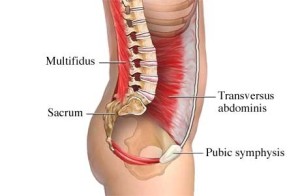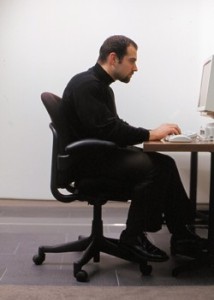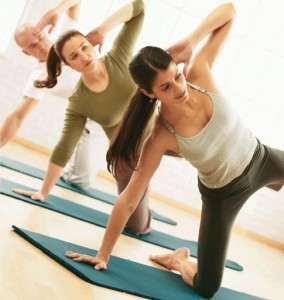How does Pilates help with back pain
Many people who have back pain and practice Pilates benefit greatly from it. So what makes Pilates so effective in alleviating back pain?
Pilates exercises target basic structural imbalances in the body that are generally the reason for back pain. Lack of core engagement, pelvic instability, muscular imbalances, poor posture, and lack of body awareness all effect the back; this is exactly what Pilates helps improve.
Deep Core muscles of the trunk
The muscles that support the trunk (abdominals, back, hips and pelvis) are called core muscles. Lack of core muscle strength can be equated with a tree that has a hollow trunk and is trying to support heavy branches! Together the core muscles provide support and stability for the spine. As part of developing core strength Pilates teaches how and when to activate and release muscles.
Pilates focuses on deep muscles like the Pelvic floor muscles (think kegels), transversus abdominus (a built in corset!), deep muscles in the shoulder, and psoas (used when you bend at the hip); while these are not muscles of the back they are important because the prevent undue pressure on the spinal column especially in movement.
Improving posture is essential to a pain free back (other than the fact that you will look taller and slimmer!). Posture is how your body parts are aligned with each other. The ideal points to check for alignment are ankles, knees, hips, shoulders and ears. While standing in one place and keeping good alignment is not not too difficult, the challenge is to maintain good posture as you move around through the day at work or at home. This is what Pilates exercises teach you…maintaining alignment and stability as you move or ‘dynamic stability’ (I just love that phrase!!) .
A simple example is when people do ab crunches I have often heard of complaints that the neck hurts more than the abs! This is because typically the position of the cervical spine (the back of the neck) is not correct and as you lift the shoulders to curl up its the neck that’s doing all the work rather than the abs. Pilates will teach you how to align your neck in this movement so that the abs are targeted instead of the neck.
Pilates increases flexibility. A healthy spine should be able to bend forward, backwards, bend from side to side and twist. The deep supporting muscles once strengthened protect and work along with the spine to allow us not only to increase the range of motion but appreciate the subtle movements that the spine is capable of.
Pilates increases body awareness. What I find the most exciting is that from the first session onwards people walk out with better body awareness. Pilates teaches us to look at our body differently and pay more attention to how we carry ourselves through life. Something as simple as pulling the ears away from the shoulder can diffuse tremendous tension that builds up around the neck and shoulder causing aches pains in the back of the neck and head.
Finally to quote Joseph Pilates “The art of *contrology proves that the only real guide to your true age lies not in years or how you THINK you feel but as you ACTUALLY are as infallibly indicated by the degree of natural and normal flexibility enjoyed by your spine throughout life.”
*Pilates was originally called Contrology.
The man was truly ahead of his time…



MOST COMMENTED